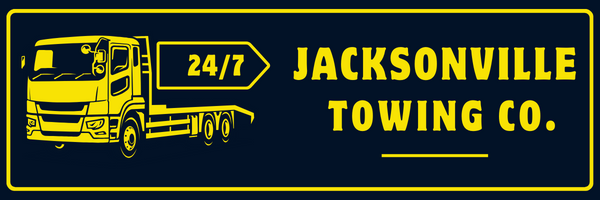If you drive on a flat tire, you’re heading for trouble. Your car’s tire will wear out faster, and the car will be harder to control, especially in bad weather.
You risk ruining your tire, misaligning your wheels, and adding stress to your suspension system.
Driving with a flat tire can significantly elevate the chance of accidents. Instead, pull over safely, use your hazard lights, and consider a temporary fix or call for roadside assistance.
The Risks of Ignoring a Flat
Ignoring a flat tire can severely compromise your vehicle’s safety and performance, leading to far-reaching consequences.
When you continue to drive with a flat, the first thing you’ll notice is accelerated tire wear. The friction between the tire and the road increases significantly, causing the rubber to wear down at an alarming rate.
A worn tire loses its grip, making it harder to control your vehicle, especially in adverse weather conditions.
Driving on a flat tire is a surefire way to decrease your fuel efficiency. The added resistance forces your engine to work harder, burning more fuel to maintain speed.
This inefficiency isn’t just bad for your wallet; it’s also detrimental to the environment due to the increased emissions.
You’re essentially burning through your fuel without getting the performance or the distance you normally would from a full tank.
Potential Damage to Your Vehicle
Beyond the immediate risks to your safety, driving on a flat tire can also inflict serious damage on your vehicle’s components.
The most apparent damage occurs to the tire itself, which can be completely destroyed, rendering it beyond repair. However, the damage often goes beyond just the tire.
When you continue to drive with a flat, the rim of the wheel bears the brunt of the road.
This not only risks damaging the rim, which can be costly to replace or repair, but it also puts undue stress on the wheel alignment.
Misaligned wheels can lead to uneven tire wear, compromising your vehicle’s handling and stability.
Furthermore, the imbalance created by driving on a flat tire can strain your vehicle’s suspension system, including shocks and struts.
These components are crucial for maintaining a smooth ride and controlling the vehicle. The additional stress can accelerate wear and tear, leading to premature failure and potentially expensive repairs.
Thus, the ripple effect of driving on a flat tire can be extensive, affecting various aspects of your vehicle’s performance and safety, far beyond the immediate tire damage.
Safety Hazards on the Road
Driving on a flat tire not only damages your vehicle but also presents significant safety hazards on the road.
When your tire loses air, your car’s handling and stability are compromised, especially under adverse weather conditions.
Wet or icy roads can turn a minor inconvenience into a major risk because the lack of proper tire traction increases the likelihood of skidding or losing control of your vehicle.
Additionally, the unpredictable behavior of a car with a flat tire can disrupt the normal traffic flow.
Other drivers might not anticipate your sudden slowdowns or difficulty in maneuvering, leading to potential rear-end collisions or hazardous swerving.
The risk escalates in high-traffic conditions where the space for error is minimal and the impact of an accident can involve multiple vehicles.
It’s also worth noting that compromised control affects your ability to respond to sudden obstacles or changes in road conditions.
Whether it’s avoiding debris, navigating sharp turns, or reacting to unexpected actions from other road users, driving on a flat tire severely limits your capacity to drive safely, putting yourself and others at risk.
Immediate Actions To Take
If you notice your tire is flat, pull over to a safe location immediately to assess the situation and take appropriate action.
Turn on your hazard lights to alert other drivers of your situation. This form of emergency signaling is essential, not just for your safety, but for the safety of others on the road.
Once safely parked, engage your parking brake to prevent the vehicle from rolling.
Before you consider any further steps, inspect the tire for obvious signs of damage. If the tire has been running flat for a while, it might be beyond a simple fix, but don’t jump to conclusions.
Tire inflation can sometimes provide a temporary solution.
For example, if you have a portable air compressor or can access one nearby, inflating the tire might get you to a service station or a safe location where you can change the tire or seek professional help.
Remember that this is only a temporary measure, and the tire’s integrity could be compromised.
Always prioritize safety over convenience. If the situation seems beyond your control, it’s better to call for roadside assistance than to risk further damage to your vehicle or, worse, an accident.
Alternatives To Driving on a Flat
Although repairing or replacing the flat tire immediately is ideal, there are alternatives worth exploring.
Consider carrying a tire inflation kit in your vehicle at all times. These compact, user-friendly devices can temporarily fix your tire, allowing you to reach a service station safely.
They’re straightforward to use: just attach the hose, activate the kit, and within minutes, your tire is partially inflated, which buys you time to get to a service station.
If you do not have a kit available or the damage is too severe, you’ll need to put on your spare tire or call for roadside assistance.
First, position your vehicle safely off the road, turn on your hazard lights, and use flares or warning triangles to alert other drivers and ensure your safety.
If you’re comfortable changing a tire and know the correct steps, remove the flat tire, and secure the spare tire in place.
If you don’t know how to change a tire safely, call for roadside assistance. In many cases, they can either repair your tire on-site or install your spare tire for you.
In situations where those options aren’t doable, they can tow your car to a repair shop for you.

